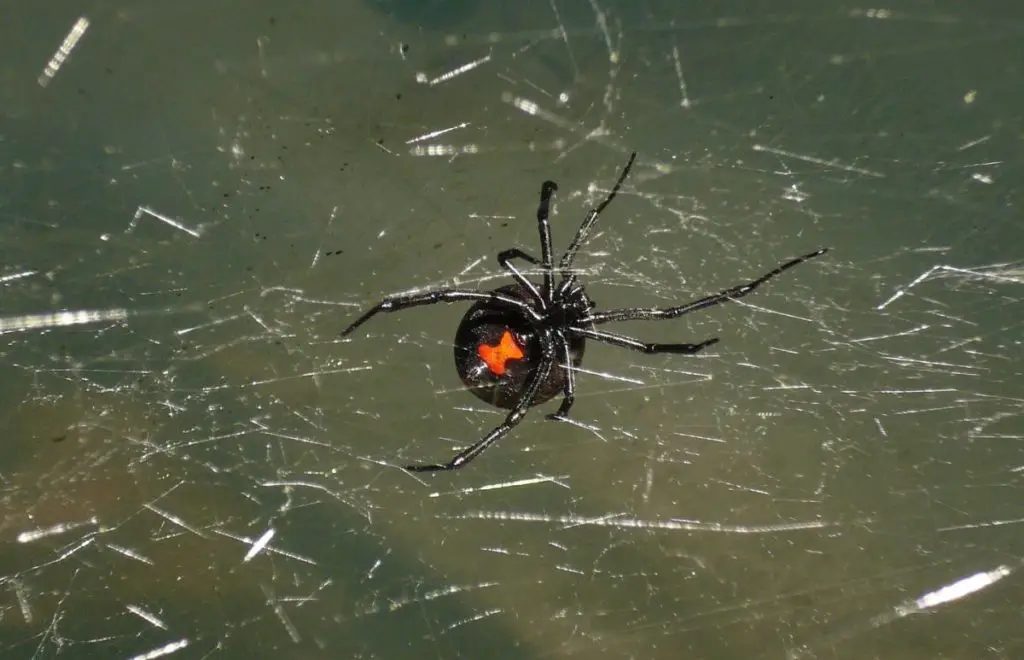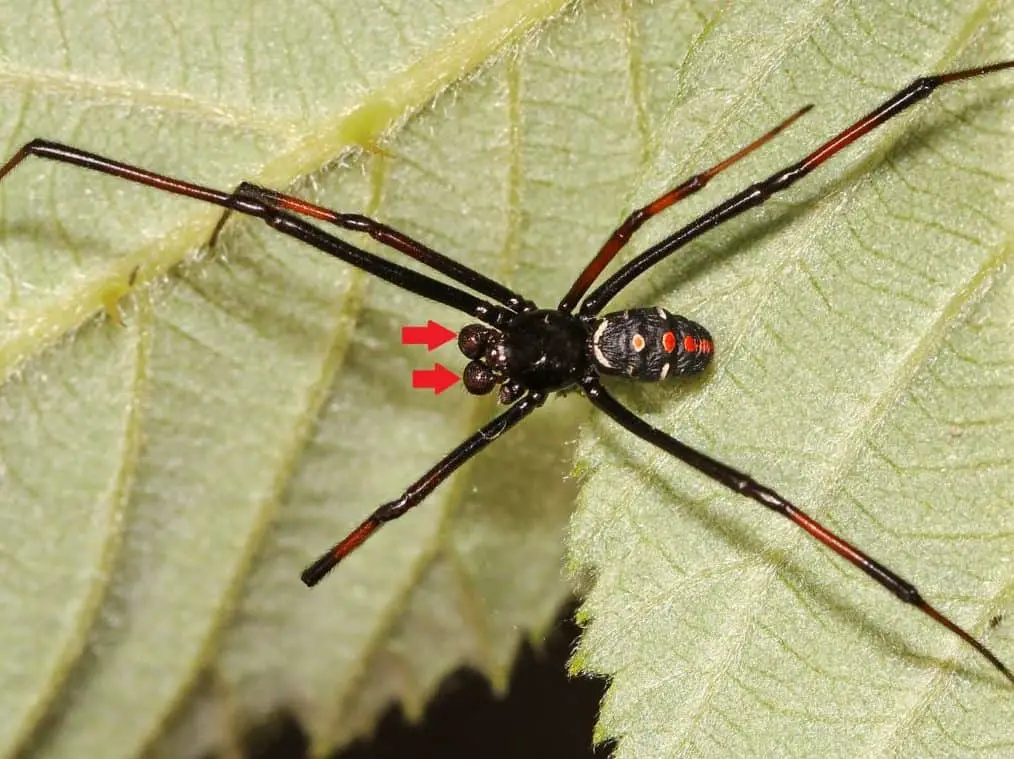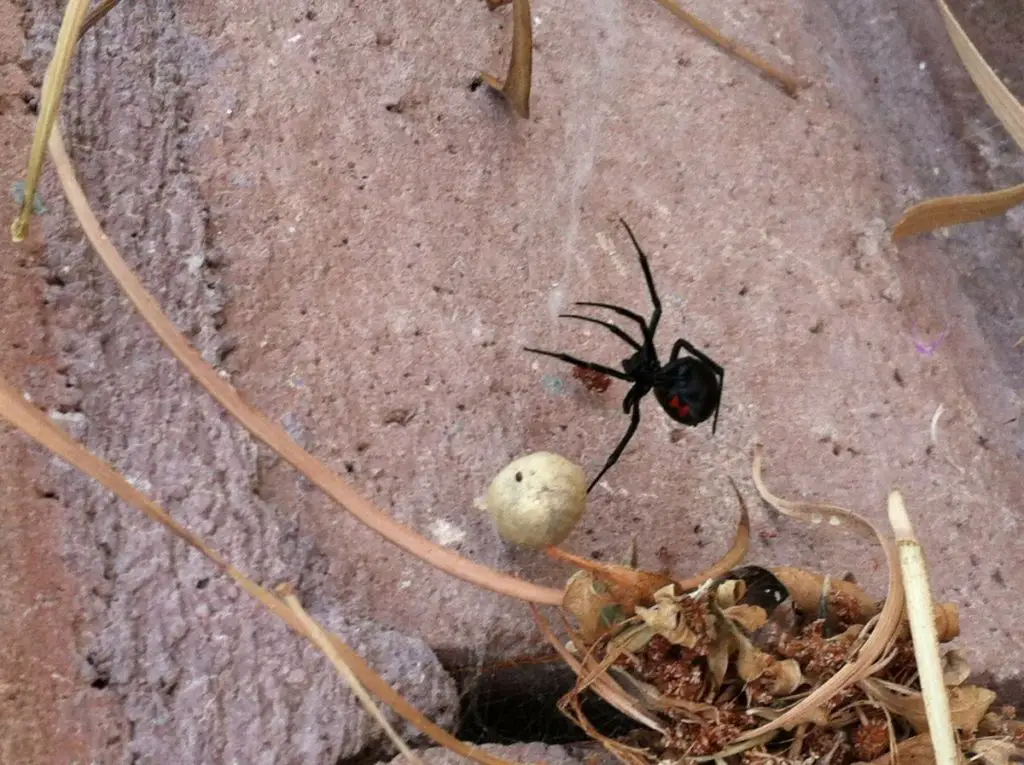Despite being notorious for her venom, the black widow spider is a good pet that you can easily keep. In this guide, I will reveal everything I know about black widows care, and how to breed them.
Keep the black widow spider in an escape proof, ventilated container with top lid. Add tree branches for it to climb and build webs. Feed it weekly with crickets or house flies, and mist the enclosure regularly. Remove any egg sacs and destroy them unless you plan to keep hundreds of widow spiders.
While the instructions sound easy, there are more things that you need to know if you want to keep a black widow as a pet. Continue reading to learn more.
Introduction to the Black Widow Spiders
I reckon most people would have learned the term black widow either in science classes or from the Marvel movie. The black widows are spiders under the genus Latrodectus, which includes other widow spiders such as the brown widows L. geometricus and the red widows L. bishopi.
There are a few species of black widow spiders: southern black widow L. mactans, western black widow L. hesperus, and northern black widow L. variolus. They can be found in the southeastern US.
A female black widow spider can grow up to 2” in leg span. Leg span is a diagonal measurement between the tip of the front leg and rear leg of the opposite side of the body. Meanwhile, the male black widow spider is only half her size.
Another distinction between male and female black widow spiders is their body shape. The female widow spiders have a big and round abdomen while the male widow spiders have a slender body.
Black widow spider is infamous for cannibalizing her mating partner. That’s how she has gotten her name. However, she doesn’t do that often, unless she is really hungry. Moreover, a recent study shows that the male widow is able to detect whether the female is hungry before he attempts to mate.
Having said that, the female black widow spiders can live for up to 1.5 years while the male widow spiders typically live not more than 6 months. Hence, she is still correctly named.
Black widows can be identified by the presence of a red hourglass shape marking at the underside of her stomach. The hourglass might be missing in juvenile spiders, male spiders and in certain species, or it might not be a perfect hourglass.

The last thing that you need to know about black widow spiders is that their bites are venomous. Female black widows are more venomous than the male. They rarely cause death though.
Getting Black Widows
Black widows are casual home intruders. You might be able to encounter and catch them at home.
To catch black widow, use a transparent vial with a cap. Cover the widow spider with the vial and let it climb inwards. Then, quickly close the cap.
The issue with wild-caught widow spiders is you know nothing about your spider. You would not know its age and hence how much longer it can live. You might not even be able to correctly identify it.
Black widow spiders can be bought from breeders. You can find reputable breeders from social media platforms and through a Google search. If possible, try to get captive-bred black widows so that you know her age. You don’t want a pet who can live for only a week.
As mentioned earlier, male black widow spiders usually live no more than 6 months. Always get a female black widow instead of male, unless you just want to try the experience of keeping a spider for a short period of time before putting in a more commitment.
Black Widows Care
Enclosure for Black Widows
Black widow spiders can be kept in a small enclosure. You can use a plastic jar with a lid. Poke a few holes along the upper wall of the jar for ventilation. Alternatively, you can buy a critter box for your spider.
Lay some peat moss or sand into the enclosure. Substrates are not extremely important for your widow spider. Having the substrates helps to keep your enclosure cleaner and reduce the cleaning frequency.
Lastly, add in some tree branches. The black widow will climb onto the branches to spin webs. Do not use long branches that can touch the lid of the enclosure. This will prevent the spider from reaching the lid and escaping when you open the lid.
The widow spiders can’t climb on smooth surfaces. They tend to stay around the web for most of the time. Hence, you don’t have to worry if you need to open up the enclosure to give them food.
Always house only 1 black widow in an enclosure to avoid cannibalism.
Microclimates for Black Widow Spiders
Black widows are sturdy spiders. You can keep them under room temperature between 68 – 77 °F (20 – 25 °C). If you are keeping brown widow spiders, they will appreciate warmer temperatures.
You might need to give your spider additional heat in the winter, if where you stay is cold. To do that, use a heat mat and put it underneath the enclosure. Monitor the temperature closely or use a thermostat to prevent your black widows from overheating.
Black widows do not need additional lighting. In fact, you should place it away from direct sunlight. If you use lighting when observing your spider, make sure to turn off the lighting after you are done. Otherwise the lighting might generate too much heat for your widow.
Mist your enclosure at least weekly to give your spider some humidity.
Feeding the Black Widows
In nature, black widows feed on a variety of insects such as flies, crickets, moths etc. In captivity, you can feed your black widow spider a cricket once a week.
While black widows can take down prey much bigger than her, it is best to give her cricket not more than 1.5 times her size. This will make hunting easier. Using a pair of tweezers, grab the cricket and drop it into the enclosure. The black widow will soon detect her prey and hunt it down.
If you are putting a larger feeder insect, keep an eye on your black widow. Intervene if you think the prey can overpower your widow spider.
You can also use house flies, by putting the fly pupae into the enclosure. After the fly emerges, it will eventually get caught on the web. Note that fly pupae need a dry environment. You can place the pupae on a dry sauce dish in the enclosure.
Another option is mealworm. But because mealworms can burrow, you want to put them in a dish so that they don’t crawl out and burrow into the substrates.
Try not to feed your black widow with wild-caught insects unless you are sure that those insects are not poisoned by pesticides.
Generally, a prey as large as the black widow can last her for a week. If you are giving the black widow house flies or mealworms, you need to give more. A fully engorged black widow has a bloated abdomen.
Water
Black widows do not need a lot of water. They get enough water from their meal and hence, you don’t have to use a water dish. The spider can also drink the water droplet from your weekly misting.
Cleaning the Enclosure
You need to clean the enclosure once every 4 to 6 months. Let the black widow crawl onto a stick and transfer it into another temporary container.
Clean the enclosure with soap water and wipe it dry. Replace the substrates and rehouse your widow spider.
How to Breed Black Widows?
Before proceeding, ask yourself whether you are serious about breeding black widows.
Black widows can lay hundreds of eggs, which can be overwhelming for any hobbyist to handle comfortably.
Moreover, the spiderlings are so small that you might not notice them escaping. They might end up occupying a corner at your house, and give you a big surprise when you do spring cleaning.
All I can say is, breed them at your own risk!
Mating
You can easily breed black widows by introducing a male widow spider into the enclosure. Make sure the female widow spider is well fed or she may eat the male.
The male widow spider will first determine whether the female is hungry. If he thinks that she is hungry, he will not proceed. He will also vibrate the webs to announce his presence to the female widow spider.
If everything looks good, the male spider will attempt to approach the female and quickly deposit his sperm into the female body using his long emboli. After that he will quickly flee. Sometimes, the male widow spider may stay peacefully with the female widow.
There are 2 keys to success. First, you need adult spiders because only adults can reproduce. If the spiders don’t mate, perhaps one of them is immature.

The tip of a male adult’s pedipalps has an extremely long embolus which is coiled into a sphere. Immatures lack fully developed emboli. Male black widows turn into adult around 2 to 3 months.
Note: Pedipalps are the 2 feelers located before the first pair of legs.
On the other hand, an adult female black widow has a big and rounded abdomen and she is shiny black. Female black widows need around 6 months to turn into adult.
The second factor is accurate species identification. As mentioned earlier, there are a few species of black widows. Black widows of different species do not mate.
It is difficult for untrained eyes to distinguish the black widows. Unless you catch the male and female from the same group, hatch them from the same egg sac or buy them from a reliable source, there is no easy way to tell different black widow species apart.
If your female black widow is wild caught at adult stage, there is a possibility that she is already pregnant and will lay viable eggs.
Eggs Laying

A gravid black widow will lay her eggs in a round, milky color egg sac on her web. Each egg sac contains 200-300 eggs, which will hatch after 1 month.
Once you see the egg sac, remove it and put it in another enclosure. It might be easier to move the black widow instead and then transfer the whole nest together with the egg sac into a new enclosure.
The mother widow spider is quite protective of her eggs. She might attack if you attempt to remove her eggs.
Caring for the Black Widow Brood
The enclosure for the brood should be laid with some peat moss. Add in some tree branches to create more surfaces for your black widows.
Because the spiderlings are so small and so huge in amount, you need the enclosure to be escape-proof. The vents should be small enough and located high enough so that the spiderlings can’t escape through the vents.
Feed the young widows with springtails or fruit flies. Put wet cotton wool in the enclosure to give them water. Younger spiders can easily drown in water. So, avoid misting until they have grown older.
You should check out how to find and rear springtails to save you money in the long run.
Young widow spiders can be kept in a group for a few weeks before you need to separate them into small, individual enclosures. Make sure you give them enough food to avoid cannibalism.
Recommended Supplies
Here are my recommended supplies that you can consider for keeping black widows. Note that I get a small commission when you buy the items through the links in this page. This helps me maintain the site without incurring additional costs to you.
What if I Got Bitten by the Black Widow?
Bites from the female black widows are venomous. If you get bitten, wash your wound under running tap water. Seek for medical attention ASAP.
Symptoms that you might encounter include muscle ache, nausea, abdominal pain, tremor, breathing difficult etc. The doctor may inject antivenin for treatment, if required.
Handling Black Widow
While the black widows are venomous, they are very docile and they don’t actively bite. Most of the time, black widow spiders bite if they feel threatened and are cornered.
Having said that, it is not advisable to handle black widow unless you need to. And when you need to, you can use a long stick and let the spider climb onto the stick. Definitely not onto your hand!
If you need to take out anything from the enclosure with the black widow inside, use tweezers. Don’t put your hand into the enclosure and risk yourself.
Final Words
I hope you find this guide useful. Do check out my other guides on tarantulas and jumping spiders. Those are the other group of spiders that can be kept as pets.
Additional Information
My black widow lays eggs but I don’t want to keep them! What should I do?
Take out the egg sac and crush it! Or, put it in the freezer for a few days to kill the eggs.
My black widow has not mated but she lays eggs. Why?
The black widows are able to lay eggs even if she has not mate. But the eggs are not viable. Just to be sure, remove the egg case and crush it or freeze it.


